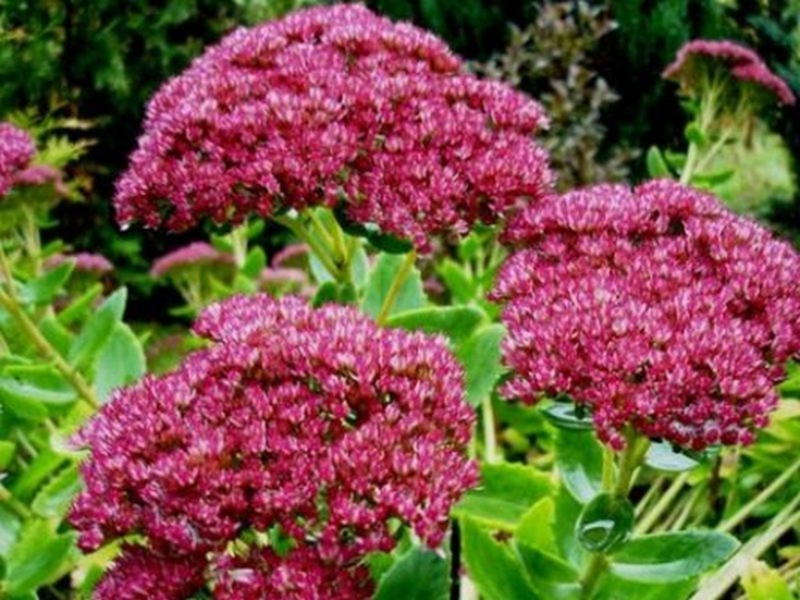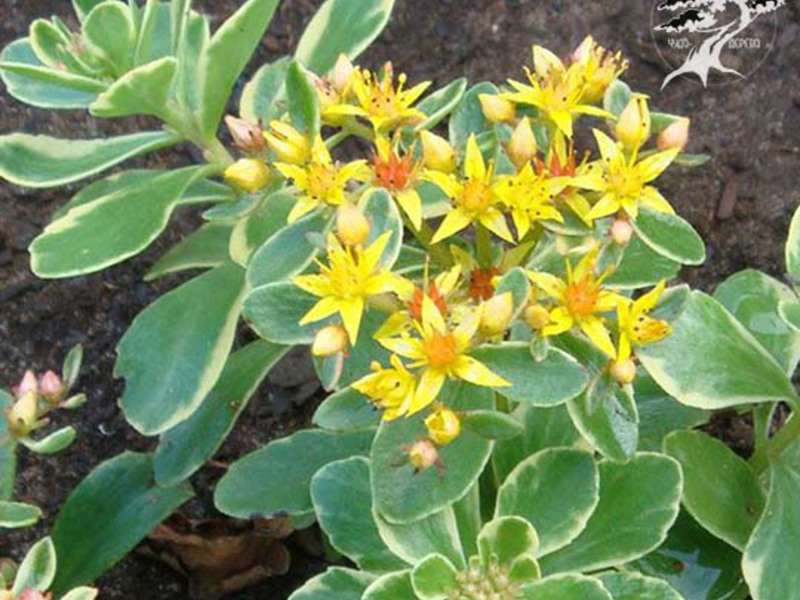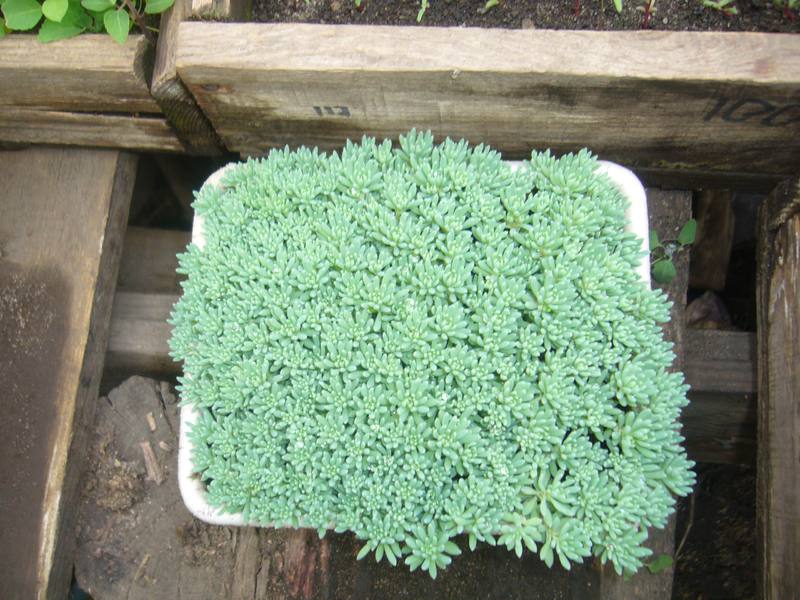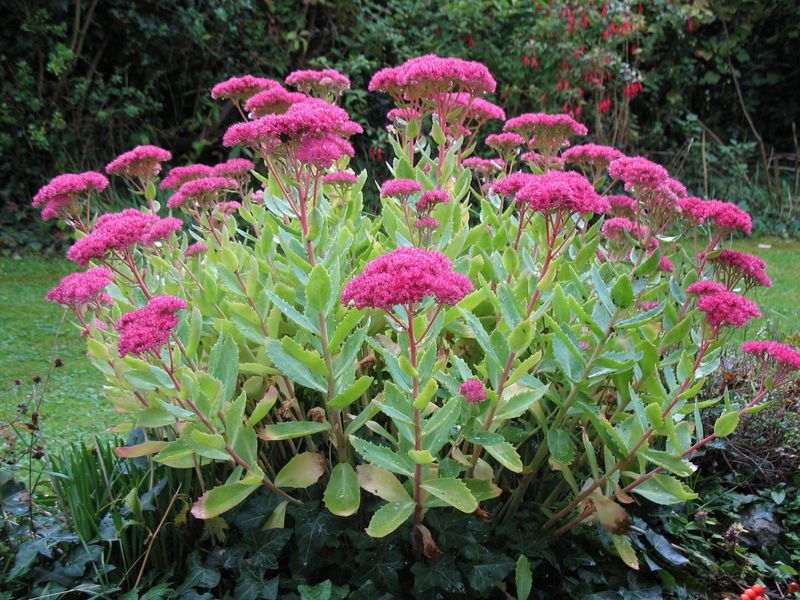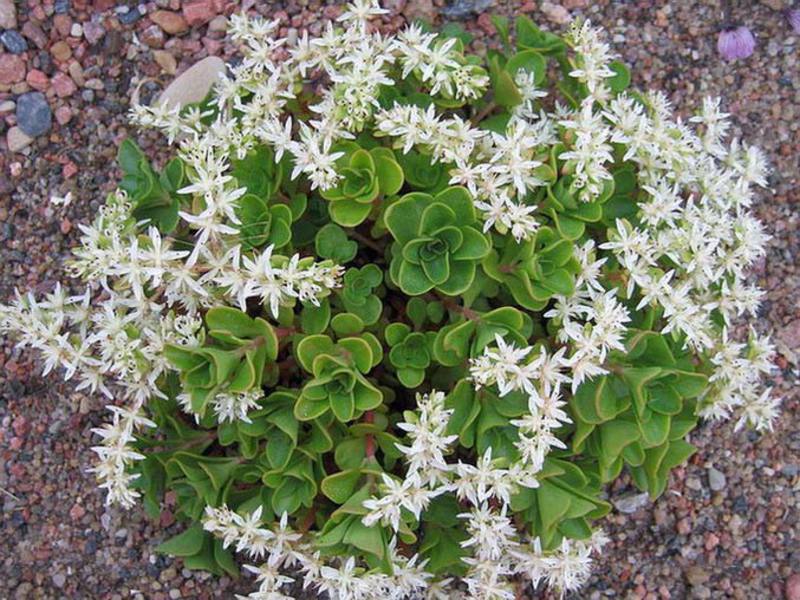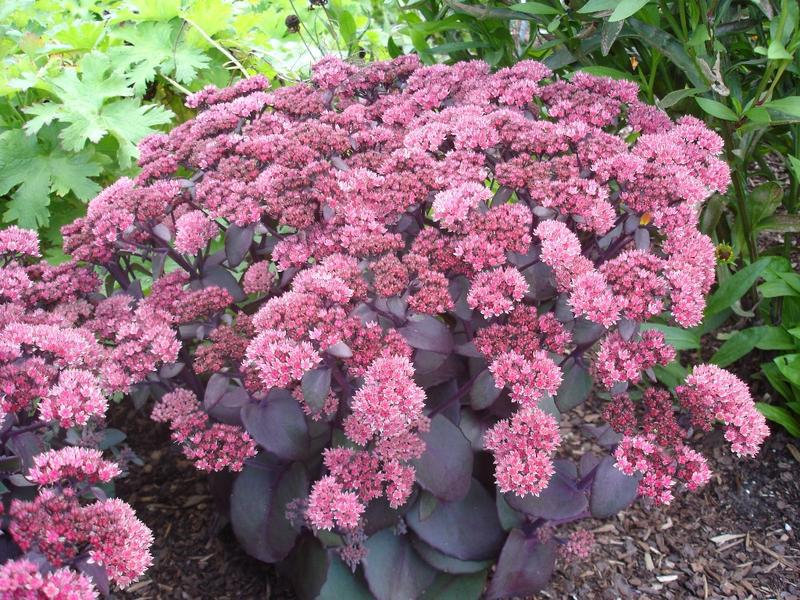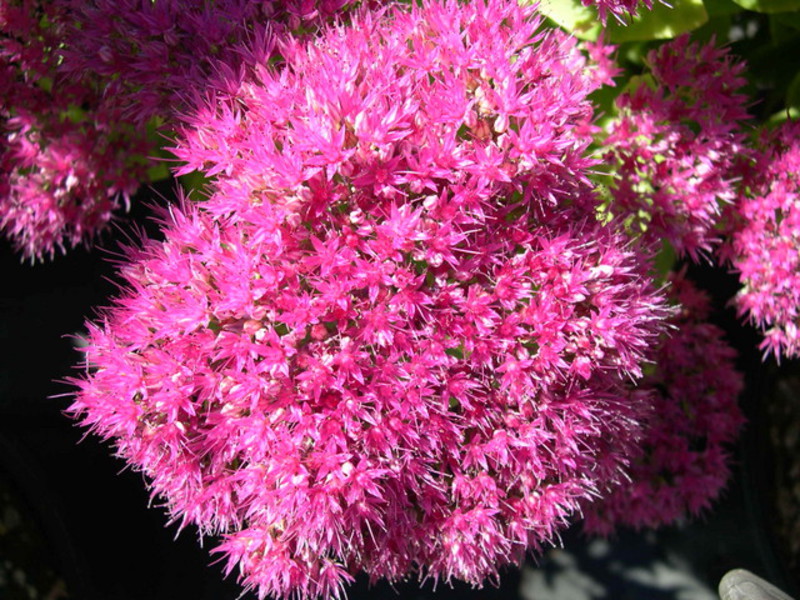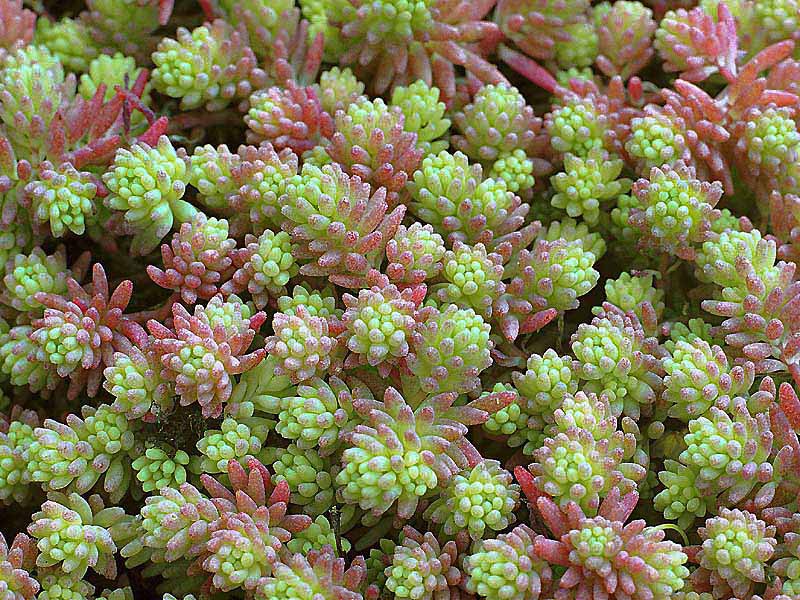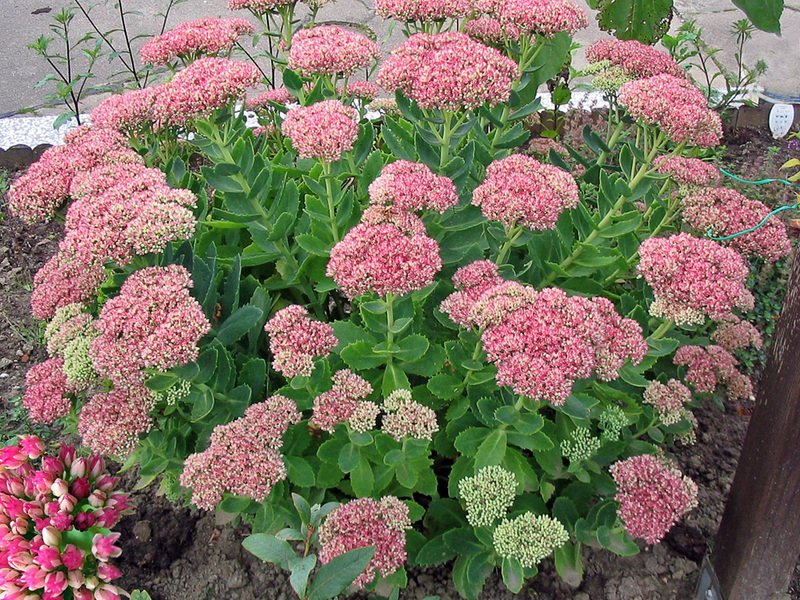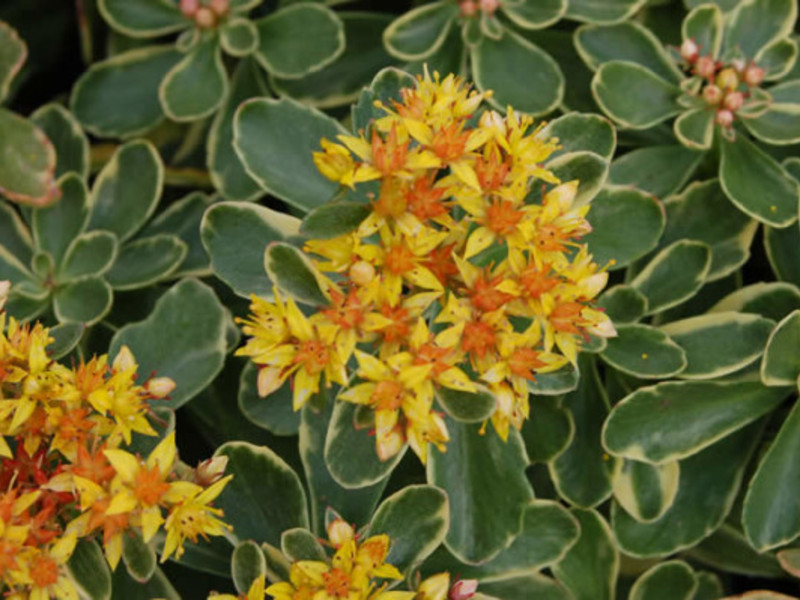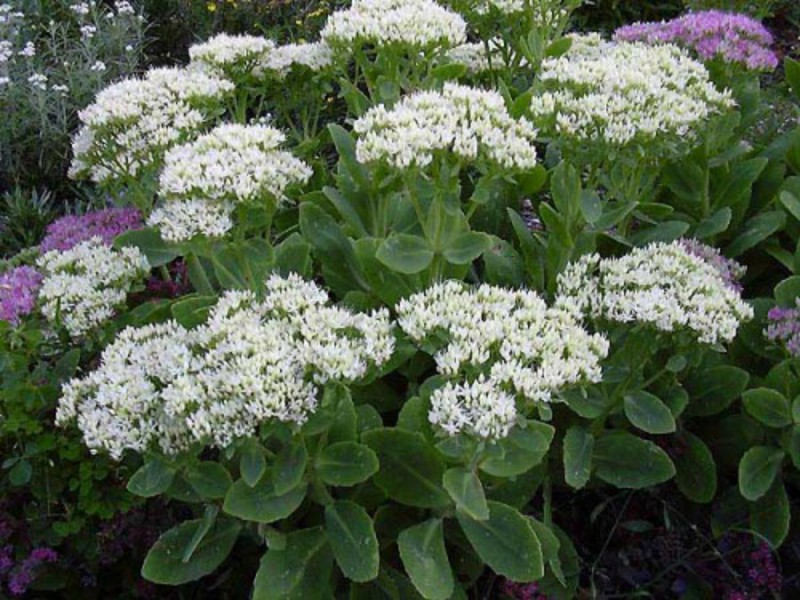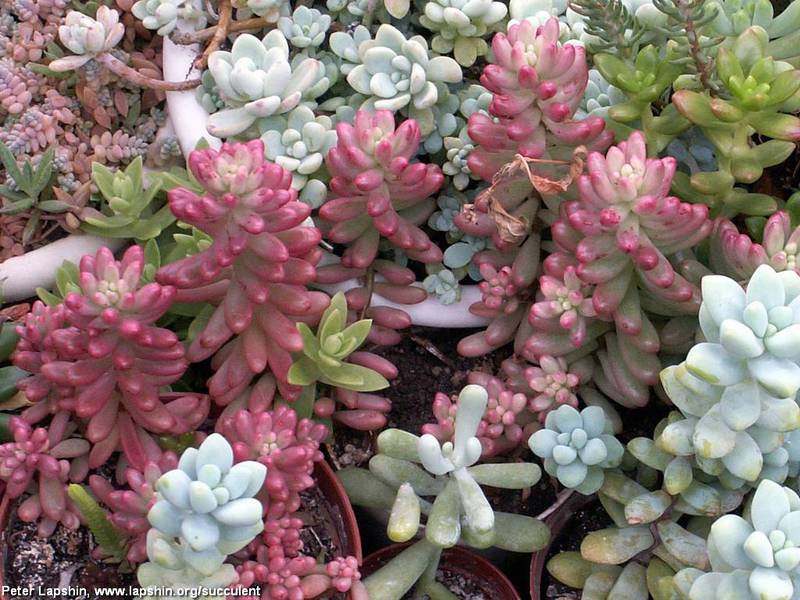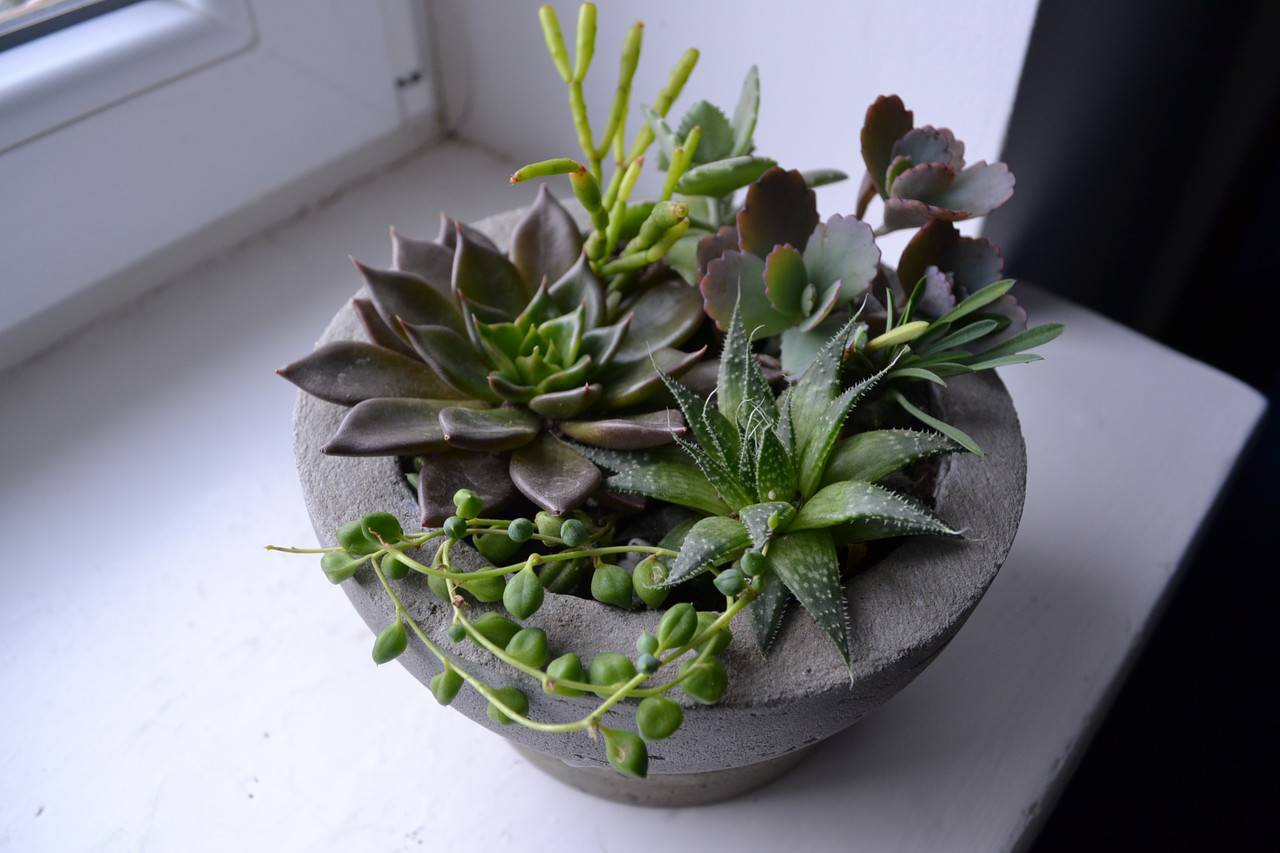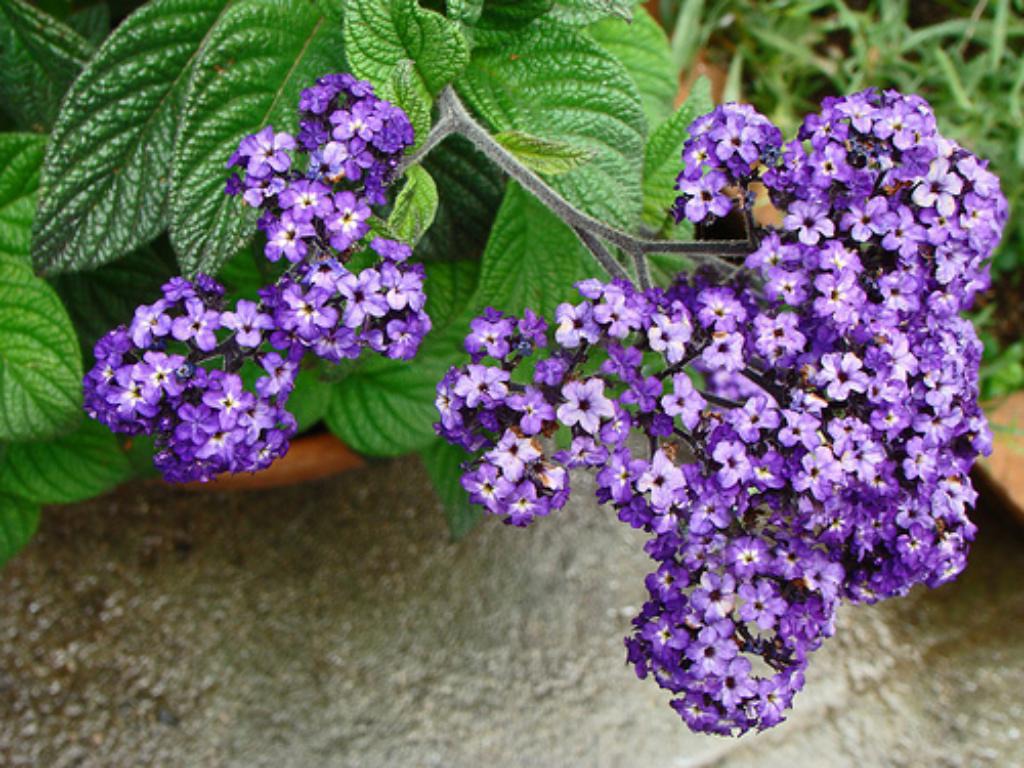Many gardeners and flower lovers are very fond of sedum, or, as it is also called, sedum. This flower looks quite modest, but at the same time it is very original. Some varieties of sedum are very often used by landscape designers in order to create carpets on their basis in garden plots in the form of some kind of pattern.
Most varieties of stonecrop are stunted, but there are also tall species with abundant flowering. There are evergreens and those losing their foliage in the fall, annual and perennial stonecrops. We will tell you what their types are, what are the features of planting and caring for these flowers. You will also see a photo of some samples.
Content
Key features of sedum and its photo
A characteristic feature of the sedum is dense and fleshy leaves with a bluish bloom... But the inflorescences consist of small, but lush small flowers of different shades. The leaves are able to change color when exposed to sunlight, which gives the flower additional attractiveness. Sedums are also able to adapt well to different conditions of detention and, depending on them, change their color, they can be:
- brown;
- burgundy;
- green.
The same types of stonecrops that grow in different areas may not look alike in appearance. In the photo you can see how different varieties of sedums differ in appearance.
Classification of varieties
The sedum contains more than 500 different varieties. However, the most popular flowers among gardeners are only a few. Below you can see the characteristics and photos of some sedum varieties.
Sedum prominent
The variety native to Asia... It is common in Japan, China, and Korea. The flower has straight long stems up to 60 cm high. Both the stems themselves and the leaves are juicy and fleshy, have a light shade. The inflorescences of such a sedum can be up to 15 cm in diameter, the flowers are small and fluffy pink, although sometimes they are red, white, and even variegated.
Sedum purple and white
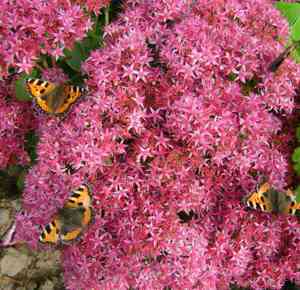 The sedum of the purple variety is common in many countries of Europe and Asia. In particular, in Russia, it is found almost throughout the entire territory with the exception of the Arctic belt. Stonecrop inflorescences begin to release by the end of summer - early autumn. Stems are straight and low, grow to a maximum of 30 cm. Leaves are green with serrated edges. The flower inflorescences have a bright purple color.
The sedum of the purple variety is common in many countries of Europe and Asia. In particular, in Russia, it is found almost throughout the entire territory with the exception of the Arctic belt. Stonecrop inflorescences begin to release by the end of summer - early autumn. Stems are straight and low, grow to a maximum of 30 cm. Leaves are green with serrated edges. The flower inflorescences have a bright purple color.
White sedum common in Europe and North Africa... It belongs to the category of evergreen plants, its stems are low - up to 20 cm maximum. The root is creeping, the foliage is small and has an elongated shape. The flowers are white, and the inflorescences are paniculate. Flowering occurs in mid-summer and lasts about a month. The colors are either white or pink-purple. Such a sedum covers the ground with a continuous “carpet” on which there are many flowers.It is better to plant in the sun and moisturize the soil well.
Caustic sedum and large
This sort of sedum is poisonous, however, in limited doses it is used as a medicine. Distributed in Europe and in Russia, mainly grows on riverbanks and pine forests. The foliage is dense, rich green in color, and the leaves themselves are small and have an oval or triangular shape in section. The flowers look like stars, their color is bright yellow. Such stonecrop blooms for a month in the middle or late summer. The stem is short, only 10 cm.
This type of sedum, as large, is common in Western Europe and on the Mediterranean coast. It belongs to the perennial category, has tall and even stems of a red-green hue. The leaves are large and elongated, oval in shape. The flowers are not very bright, most often light pink.
Other types of sedum
There is also more several popular sedum varietiesthat gardeners love:
- tenacious - grows in the Far East and Siberia. The stems have a maximum height of 30 cm. The foliage is juicy, dense and serrated, elongated. The flowers resemble stars, have a bright yellow color;
- Evers sedum - most often found in the mountains - the Himalayas, Altai, Central Asia and China. Its peculiarity is that such a plant spreads along the ground like a thick carpet. The stems are straight and low. The leaves are round and wide, have a bluish bloom. The flowers are small, light pink in color;
- sedum Morgan is an attractive externally plant that is native to Mexico. The shoots of this sedum are long and dotted with abundantly fleshy blue-green leaves. Well suited for planting in hanging flowerpots;
- thick-leaved - the leaves of the flower look especially here. They are elongated, their length can reach 4 cm. The tips of the leaves have a red tint.
How to properly grow stonecrops
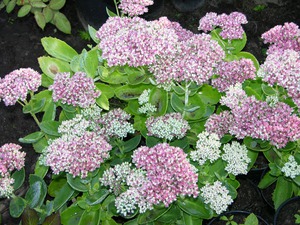 Sedums are good because they are distinguished by their unpretentiousness in terms of growing and care. For this, gardeners love them. Almost any soil is suitable for planting, even the poorest. In vivo stonecrop can grow on pebbles, even a minimal piece of soil is enough for them.
Sedums are good because they are distinguished by their unpretentiousness in terms of growing and care. For this, gardeners love them. Almost any soil is suitable for planting, even the poorest. In vivo stonecrop can grow on pebbles, even a minimal piece of soil is enough for them.
But abundant flowering varieties require fertile soil, they should be fertilized and watered regularly. And ordinary varieties do not need additional watering, unless the summer is very dry. Flowers can rot from an excess of liquid, and not vice versa.
An important part of sedum care is the presence of the sun. Under the influence of rays, the leaves acquire a rich and attractive shade. And in the absence of light in the right amount, the flower will lose its attractiveness.
Most varieties of sedum no need to fertilize, but even those that bloom profusely do not require much feeding.
Stonecrop can grow without transplantation for 5 years, then it can be rejuvenated as follows:
- cut off old branches;
- sprinkle with fresh soil;
- transplant a young plant.
In order for the plant to always be in perfect condition, as part of its care, you need to constantly cut off those parts that protrude above its surface. But sedum itself will not cope with weeds, here you need to weed the ground. An exception is the caustic variety, which emits poisonous substances and does not allow such a "neighborhood".
Planting stonecrops
With regard to planting, there is nothing complicated here, as well as in leaving. Consider the following:
- the landing site should be well lit by the sun;
- the soil should not allow water to pass through in order to prevent decay. It is best to plant the plant in sandy or sandy loam soil, but if the soil is loamy, then before planting sedum, it must be fertilized with a baking powder in the form of peat or sand;
- do not overexpose the planting material so that the stems do not stretch out. Such sedum will not be able to develop normally.
Sedums reproduce in three ways:
- through seeds;
- dividing the bushes;
- cuttings.
Stonecrop propagation
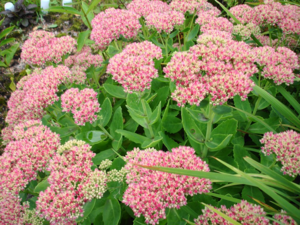 Reproduction using seeds in practice is quite difficult and only within the power of specialist breeders. In garden conditions, the division of the bush is carried out in the spring up to its four years of age. For older plants, this is unlikely to be feasible.
Reproduction using seeds in practice is quite difficult and only within the power of specialist breeders. In garden conditions, the division of the bush is carried out in the spring up to its four years of age. For older plants, this is unlikely to be feasible.
That is why cuttings are the most common method of stonecrop breeding among summer residents. It can be stem and leaf... Rooting is easy, so planting in the ground is possible in a couple of weeks.
Planting stages
It is done like this:
- preparing the site for planting;
- sprinkle on it the tops of the shoots of the plant, previously cut;
- sprinkle them with earth per centimeter;
- we compact;
- water as needed.
There is another method of grafting, which spend in the cold season... First, after flowering stonecrop, cuttings on flowering shoots are cut, then they are stored in a dry place for several months. At this time, the sedum is overgrown with shoots with roots. When the roots grow up to 5 cm, you can start planting.
Some gardeners like to experiment in terms of planting sedum plants: plant different varieties of them and observe the subsequent offspring.
Planting rules at home
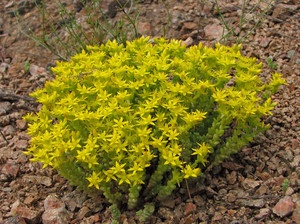 Almost all sedum varieties need to be repotted periodically. If this is a young specimen, then about once every 2 years, and an adult requires this once every 4 years.
Almost all sedum varieties need to be repotted periodically. If this is a young specimen, then about once every 2 years, and an adult requires this once every 4 years.
Landing not recommended for autumn and winter, because during this period the foliage falls off abundantly. But March-April is the best time for this.
Young cuttings must be planted very carefully and carefully, because otherwise, there is a risk of damage to the stem or root. Also, do not let the direct rays of the sun fall on young shoots.
For the cutting, it is better to choose the stem as long as possible, when cutting from the main part, a 5-centimeter outgrowth should be left, and the removed part should be chopped not 10-centimeter sectors.
Then the cuttings are dried at room temperature for several days and only then are they planted.
At home, in addition to cuttings, you can use dry sedum foliage. They are buried as deep as possible in the soil and give young shoots after a few weeks.
Choosing a pot for sedum
The most important thing is abandon plastic structures when planting sedum in a pot. You also need to choose it in shape. This is because stonecrops have a horizontal root system, so if the pot is too deep, they won't like it.
The best option is a wide and shallow pot.
The choice of soil for growing in a pot
When planting stonecrops, it is very important to choose and prepare the soil correctly. At the same time, it is very important that it has a low acidity.
You can prepare the mixture yourself based on components such as:
- river coarse sand;
- turf;
- rotten leaves;
- peat.
The soil should be even and loose. To make its structure better, you can add brick chips there. And it is better to equip the bottom of the pot with a plentiful drainage layer. At the same time, the soil should not be wet when planting.
It is necessary to make sure that the environment for planting stonecrop is favorable in a few days. Loosen the soil and water it abundantly. And after a few days, check the top layer for moisture. If it is not there, then you can start planting the plant.
Stonecrop care
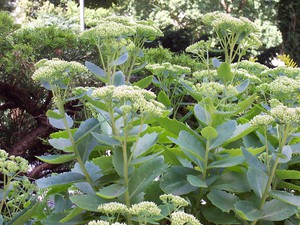 After planting, the sedum must be protected from exposure to sunlight for several days. And then the pot can be safely put on the sunny side... About once every few hours, the room with the plant needs to be ventilated. At this time, you should not water it abundantly.
After planting, the sedum must be protected from exposure to sunlight for several days. And then the pot can be safely put on the sunny side... About once every few hours, the room with the plant needs to be ventilated. At this time, you should not water it abundantly.
As a rule, young and adult specimens tolerate transplantation without problems and take root very quickly.
It doesn't matter if you plan to grow sedum in a pot on a balcony or in a garden area outside the city, it is important to follow the rules of care.If everything is done correctly and the watering regime is observed, the plant will delight you and your loved ones for ten, or even more years.
